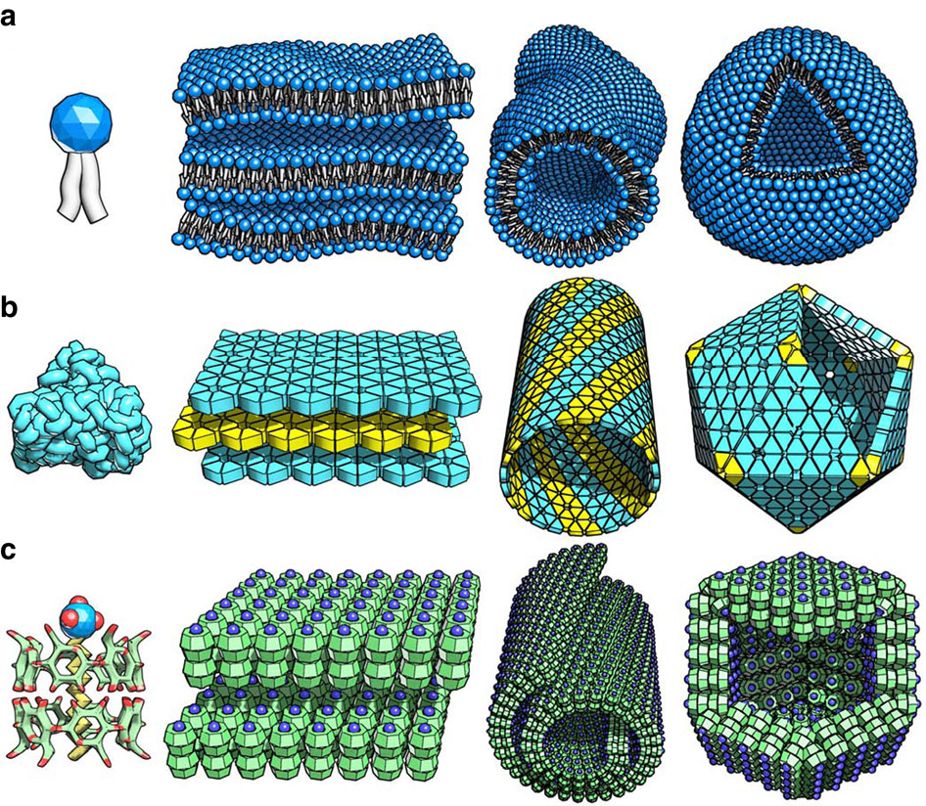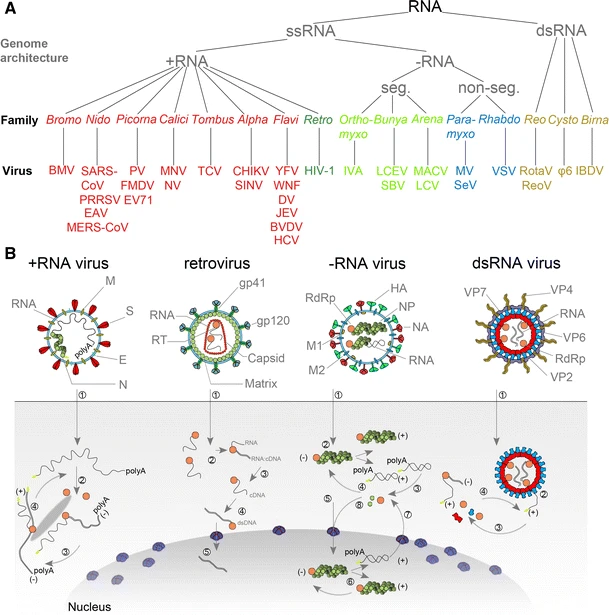|
Cowpea Chlorotic Mottle Virus
''Cowpea chlorotic mottle virus'', known by the abbreviation CCMV, is a virus that specifically infects the cowpea plant, or black-eyed pea. The leaves of infected plants develop yellow spots, hence the name "chlorotic". Similar to its "brother" virus, ''Cowpea mosaic virus'' (CPMV), CCMV is produced in high yield in plants. In the natural host, viral particles can be produced at 1–2 mg per gram of infected leaf tissue. Belonging to the bromovirus genus, cowpea chlorotic mottle virus (CCMV) is a small spherical plant virus. Other members of this genus include the brome mosaic virus (BMV) and the broad bean mottle virus (BBMV). History Bancroft et al. in 1967 described the first experiments to isolate and characterize the virus. Since that time, due to the relative ease with which it is grown and isolated, many researchers have focused their attention on the virus. The interest of the scientific community for this virus is also due to a conspicuous property: it is possible ... [...More Info...] [...Related Items...] OR: [Wikipedia] [Google] [Baidu] |
Virus
A virus is a submicroscopic infectious agent that replicates only inside the living cells of an organism. Viruses infect all life forms, from animals and plants to microorganisms, including bacteria and archaea. Since Dmitri Ivanovsky's 1892 article describing a non-bacterial pathogen infecting tobacco plants and the discovery of the tobacco mosaic virus by Martinus Beijerinck in 1898,Dimmock p. 4 more than 9,000 virus species have been described in detail of the millions of types of viruses in the environment. Viruses are found in almost every ecosystem on Earth and are the most numerous type of biological entity. The study of viruses is known as virology, a subspeciality of microbiology. When infected, a host cell is often forced to rapidly produce thousands of copies of the original virus. When not inside an infected cell or in the process of infecting a cell, viruses exist in the form of independent particles, or ''virions'', consisting of (i) the genetic material, i. ... [...More Info...] [...Related Items...] OR: [Wikipedia] [Google] [Baidu] |
Black-eyed Pea
The black-eyed pea or black-eyed bean is a legume grown around the world for its medium-sized, edible bean. It is a subspecies of the cowpea, an Old World plant domesticated in Africa, and is sometimes simply called a cowpea. The common commercial variety is called the California Blackeye; it is pale-colored with a prominent black spot. The American South has countless varieties, many of them heirloom, that vary in size from the small lady peas to very large ones. The color of the eye may be black, brown, red, pink, or green. All the peas are green when freshly shelled and brown or buff when dried. A popular variation of the black-eyed pea is the purple hull pea or mud-in-your-eye pea; it is usually green with a prominent purple or pink spot. The currently accepted botanical name for the black-eyed pea is ''Vigna unguiculata'' subsp. ''unguiculata'', although previously it was classified in the genus '' Phaseolus''. ''Vigna unguiculata'' subsp. ''dekindtiana'' is the wild relat ... [...More Info...] [...Related Items...] OR: [Wikipedia] [Google] [Baidu] |
Cowpea Mosaic Virus
Cowpea mosaic virus (CPMV) is a non-enveloped plant virus of the Comovirinae, comovirus group. Infection of a susceptible cowpea leaf causes a "mosaic" Mosaic virus, pattern in the leaf, and results in high virus yields (1-2 g/kg). Its genome consists of 2 molecules of Sense (molecular biology), positive-sense RNA (RNA-1 and RNA-2) which are separately encapsidated. Both RNA1 and RNA2 have a VPg (virus genome-linked protein) at the 5'end, and polyadenylation at the 3' end. Genomic RNA1 and RNA2 are expressed by a polyprotein processing strategy. RNA1 encodes helicase, VPg, protease and RNA-dependent RNA polymerase, RdRp. RNA2 encodes Movement proteins, movement protein and Capsid, coat protein. The virus particles are 28 nm in diameter and contain 60 copies each of a Large (L) and Small (S) coat protein. The structure is well characterised to atomic resolution, and the viral particles are thermostable. The identification of the virus is attributed to Lister and Thresh in 19 ... [...More Info...] [...Related Items...] OR: [Wikipedia] [Google] [Baidu] |
Self-assembly
Self-assembly is a process in which a disordered system of pre-existing components forms an organized structure or pattern as a consequence of specific, local interactions among the components themselves, without external direction. When the constitutive components are molecules, the process is termed molecular self-assembly. Self-assembly can be classified as either static or dynamic. In ''static'' self-assembly, the ordered state forms as a system approaches equilibrium, reducing its free energy. However, in ''dynamic'' self-assembly, patterns of pre-existing components organized by specific local interactions are not commonly described as "self-assembled" by scientists in the associated disciplines. These structures are better described as "self-organized", although these terms are often used interchangeably. Self-assembly in chemistry and materials science Self-assembly in the classic sense can be defined as ''the spontaneous and reversible organization of molec ... [...More Info...] [...Related Items...] OR: [Wikipedia] [Google] [Baidu] |
Mutant
In biology, and especially in genetics, a mutant is an organism or a new genetic character arising or resulting from an instance of mutation, which is generally an alteration of the DNA sequence of the genome or chromosome of an organism. It is a characteristic that would not be observed naturally in a specimen. The term mutant is also applied to a virus with an alteration in its nucleotide sequence whose genome is in the nuclear genome. The natural occurrence of genetic mutations is integral to the process of evolution. The study of mutants is an integral part of biology; by understanding the effect that a mutation in a gene has, it is possible to establish the normal function of that gene. Mutants arise by mutation Mutants arise by mutations occurring in pre-existing genomes as a result of errors of DNA replication or errors of DNA repair. Errors of replication often involve translesion synthesis by a DNA polymerase when it encounters and bypasses a damaged base in the temp ... [...More Info...] [...Related Items...] OR: [Wikipedia] [Google] [Baidu] |
RNA Virus
An RNA virus is a virusother than a retrovirusthat has ribonucleic acid (RNA) as its genetic material. The nucleic acid is usually single-stranded RNA ( ssRNA) but it may be double-stranded (dsRNA). Notable human diseases caused by RNA viruses include the common cold, influenza, SARS, MERS, Covid-19, Dengue Virus, hepatitis C, hepatitis E, West Nile fever, Ebola virus disease, rabies, polio, mumps, and measles. The International Committee on Taxonomy of Viruses (ICTV) classifies RNA viruses as those that belong to ''Group III'', ''Group IV'' or ''Group V'' of the Baltimore classification system. This category excludes ''Group VI'', viruses with RNA genetic material but which use DNA intermediates in their life cycle: these are called retroviruses, including HIV-1 and HIV-2 which cause AIDS. As of May 2020, all known RNA viruses encoding an RNA-directed RNA polymerase are believed to form a monophyletic group, known as the realm '' Riboviria''. The majority of such RNA ... [...More Info...] [...Related Items...] OR: [Wikipedia] [Google] [Baidu] |
Genome
In the fields of molecular biology and genetics, a genome is all the genetic information of an organism. It consists of nucleotide sequences of DNA (or RNA in RNA viruses). The nuclear genome includes protein-coding genes and non-coding genes, other functional regions of the genome such as regulatory sequences (see non-coding DNA), and often a substantial fraction of 'junk' DNA with no evident function. Almost all eukaryotes have mitochondria and a small mitochondrial genome. Algae and plants also contain chloroplasts with a chloroplast genome. The study of the genome is called genomics. The genomes of many organisms have been sequenced and various regions have been annotated. The International Human Genome Project reported the sequence of the genome for ''Homo sapiens'' in 200The Human Genome Project although the initial "finished" sequence was missing 8% of the genome consisting mostly of repetitive sequences. With advancements in technology that could handle sequenci ... [...More Info...] [...Related Items...] OR: [Wikipedia] [Google] [Baidu] |
Homologous Recombination
Homologous recombination is a type of genetic recombination in which genetic information is exchanged between two similar or identical molecules of double-stranded or single-stranded nucleic acids (usually DNA as in cellular organisms but may be also RNA in viruses). Homologous recombination is widely used by cells to accurately DNA repair harmful breaks that occur on both strands of DNA, known as double-strand breaks (DSB), in a process called homologous recombinational repair (HRR). Homologous recombination also produces new combinations of DNA sequences during meiosis, the process by which eukaryotes make gamete cells, like sperm and egg cells in animals. These new combinations of DNA represent genetic variation in offspring, which in turn enables populations to adapt during the course of evolution. Homologous recombination is also used in horizontal gene transfer to exchange genetic material between different strains and species of bacteria and viruses. Horizontal ... [...More Info...] [...Related Items...] OR: [Wikipedia] [Google] [Baidu] |
Bromoviridae
''Bromoviridae'' is a family of viruses. Plants serve as natural hosts. There are six genera in the family. Taxonomy The following genera are assigned to the family: * ''Alfamovirus'' * ''Anulavirus'' * ''Bromovirus'' * ''Cucumovirus'' * ''Ilarvirus'' * ''Oleavirus ''Oleavirus'' is a genus of viruses, in the family ''Bromoviridae ''Bromoviridae'' is a family of viruses. Plants serve as natural hosts. There are six genera in the family. Taxonomy The following genera are assigned to the family: * ''Alfa ...'' Structure Viruses in the family ''Bromoviridae'' are non-enveloped, with icosahedral and bacilliform geometries. The diameter is around 26-35 nm. Genomes are linear and segmented, tripartite. Life cycle Viral replication is cytoplasmic, and is lysogenic. Entry into the host cell is achieved by penetration into the host cell. Replication follows the positive stranded RNA virus replication model. Positive stranded rna virus transcription, using the internal ... [...More Info...] [...Related Items...] OR: [Wikipedia] [Google] [Baidu] |





